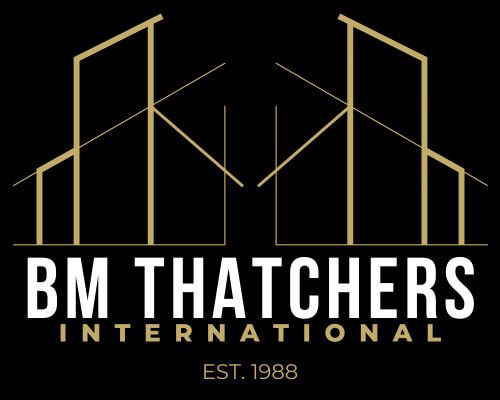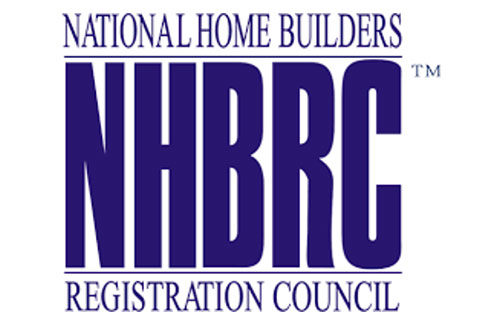Thatch roofs are a popular choice in South Africa due to the fact that they insulate the cold and the heat very well; perfect for our sometimes-harsh climate.
However, we find that one thing that often puts people off of getting them for their homes is the myth that thatch roofs are notoriously difficult to maintain.
The truth is quite different, however, in that they are typically no more difficult to take care of than other roofing materials.
They last just as long and require similar amounts of attention, but there are a few particulars you should look into if you want to maintain yours.
This will ensure that they benefit from an extended lifespan, keep up expectations when it comes to their aesthetic appeal, and that they are stable, and insulate your home correctly.
In this article, we will explore what goes into maintaining thatch roofs.
We will do this by taking a look at a few reasons why their maintenance is crucial, we will speak about how often these roofs should be maintained, the different approaches to thatching a roof, as well as a few considerations that you should make before you get started.
The Importance of Thatch Roof Maintenance
On the surface it seems pretty simple, if you want your thatch roof to retain the best condition, you need to keep a fairly close eye on it. In reality, they don’t even require that much involvement, but that doesn’t mean that timely maintenance is not essential.
Remember though, that an untidy thatch roof does not necessarily mean that it needs attention, while similarly, one where everything looks like it is in place, may very well still require some form of maintenance.
This is a chief concern for those who have recently purchased a new house with a thatch roof. For you to take proper charge of its condition, you should at the very least have it inspected by a professional thatching company soon after moving in, to see if it will need any repairs or maintenance.
Of course, there are a few other reasons why you may want to maintain your thatch roof, let’s take a look at them here:
Extending the Lifespan of Your Roof
Thatch roofs last about as long as any other roofing material. A well-built and properly maintained one will last for up to 50 years before it needs any serious work done on them.
Of course, you likely won’t have your thatch last this long if you simply ignore its condition once it has been erected.
Remember that there are a lot of components that go into a thatch roof, and each of these may pose problems at different times.
Either way, if you pay fairly close attention to maintaining your thatch roof when the need arises, you can benefit from the extensive lifespan that this roofing material offers.
Ensuring Proper Insulation
One of the top benefits to thatch roofs is how well they insulate interior spaces. However, if the thatching has become damaged for any reason, this might weaken its insulation at any time of the year.
When thatch degrades, spaces are often created in the roof from which air can escape or enter into internal spaces. As it does so, it transfers heat, making it nearly impossible to maintain a steady temperature indoors.
However, by ensuring that your thatch roof is properly maintained at all times, you can ensure that it insulates your home effectively at all times, making for a more comfortable living environment.
Minimise the Presence of Pests
One of the problems people often have with thatch roofs is that, because of their materials, they have a tendency to attract in pests.
While this is strictly true, they are also fitted with mesh that prevents small animals and birds from entering into the materials, where they often make a home for themselves, and further damage the thatch.
This netting, as you may expect, needs to be repaired from time to time, especially as thatch materials start to loosen.
This is because it begins to lift, effectively creating openings for pests to get through, from where they may burrow into the thatch.
Because of this, it is essential to have it re-meshed when the need arises, less the chance of damage is accelerated by pests.
Keep Your Roof Looking Good
On a more surface level, a badly maintained thatch begins to show unsightly signs of wear and tear fairly quickly if maintenance tasks are missed.
This will cause the materials to become displaced, the meshing might get holes, and in some situations, moss can set into the reeds, the beams supporting it may even rot.
All of this makes for very little aesthetic appeal, and just like needing to paint a tiled roof, a thatched one needs to be maintained for it to continuously look good.
Safety & Stability
The next good reason to maintain your roof to ensure that it consistently boasts good structural integrity.
This is as important for the safety of your home (since you don’t want anything collapsing), as it is for the effectiveness of the thatch roof itself.
If it is damaged, it won’t insulate as well, may present somewhat of a fire hazard, and may allow pests to make their way in.
Improving the Value of Your Home
Another excellent reason for maintaining a thatch roof would be if you are looking to put your house on the market, and would like to get as much for it as possible.
Trying to sell a house with an old, damaged thatch roof is doable, but it will likely put some buyers off, particularly if your asking price is fairly high.
If you want to inspire confidence in your potential buyers, showing them a house with a dishevelled thatch roof won’t impress anybody; in fact, it might put them off.
So if you have a thatch roof in your home, and are looking to sell, you should definitely consider restoring or maintaining it.
How Often Should You Maintain a Thatch Roof?
You may assume that a thatch roof needs to undergo maintenance more frequently than most other building materials; fortunately, this is absolutely not the case.
In fact, thatch roofing materials need maintenance about as frequently (or rather infrequently) as any other type of roof.
The thatch itself, when properly installed and treated, can last a staggering 50 years, which is much longer than most people will actually live in one single house for; which means that there is always the chance you will never have to worry about all-inclusive maintenance on your roof.
If you do, however, 50 years is a very long time to go between maintenance intervals, so it generally isn’t something you need to actively worry about, as long as you keep tabs on its condition.
The ridging, however, which is the bit that seals the top and is made either from fibreglass or concrete, generally needs maintenance once every 10 to 15 years.
Approaches to Thatch Roof Maintenance
If you happen to be at the point where maintenance on your thatch roof is necessary, there are a number of approaches you can take, depending on the type of restoration or preventative maintenance you need to do.
Some of these should be seen as a standard part of maintenance for your roof, while others will depend on what is wrong with it.
Let’s take a closer look at each:
Pre-Maintenance Inspections
This one should happen before you start any type of maintenance, which makes sense. You’re not going to know what needs to be restored until you have a look.
Except that you shouldn’t be the one carrying out the inspection (unless you are a professional thatcher, in which case, you probably already know all of this).
So, be sure to hire a professional thatching company to help you with the inspection. If you haven’t used the company before, have another one come and inspect it for you as well, to ensure that you are getting the right service, at the right price.
Once you have done this, you will have a better idea of where your efforts need to be concentrated.
Patching Thatch Roofs
After a long period of time, the actual thatching in your roof will likely become a little worn down from weather conditions and just the ravages of age.
When this happens, there is no need to re-thatch the entire thing, a little bit of restorative maintenance ought to do the job.
Total Re-Thatching
Of course, with enough time, neglect and general atrophy, a thatch roof will eventually become completely damaged, at which case, a bit of simple restorative maintenance simply won’t do the trick.
If the thatch is old enough and has been damaged badly enough (perhaps there was an accident), then you are probably better off re-thatching the whole thing. But before you jump to such an extreme measure, first consult with a thatching professional to be sure.
Flashing Thatch Roofs
One of the most important functions of a thatch roof is to ensure that undesirable weather stays outside, and comfort stays in. And this is where flashing comes in, particularly with regards to waterproofing your thatch.
During flashing, waterproof panels are placed beneath the thatching itself to ensure that no water permeates through the roof, where it can either leak into your home or result in the growth of moss in its interiors.
Not something you really want.
Thatch Roof Ridge Repair
One of the most frequently needed types of thatch roof maintenance needs to be done on the ridge, right at the top of the roof. This is the bit that is made up of either fibreglass or concrete.
The ridge of the thatch roof takes damage more rapidly than any of the other parts, but even still, maintenance generally only needs to be done every decade or so, depending on the conditions it is situated in.
Of course, you should check up on its condition a bit more frequently than that, but you likely won’t have to call a professional to see to it very often.
Considerations to Make when Maintaining Thatch Roofs
To ensure that nothing is amiss after maintenance has been conducted, there are a few considerations you should make before getting started.
Firstly, as mentioned before, you should consider getting more than one quote so that you can compare them.
Some thatchers might quote you for work that doesn’t need to be done, so be sure to get a second opinion if you are not sure.
Remember too to take a close look at your meshing on a regular occasion, this will stop pests from getting in and causing further damage.
Another thing you need to keep an eye out for is the presence of moss and mould. If they are not too severe, you can have it removed with relative ease.
However, if it is too severe, it might be better to not try and remove it, as that could cause more damage than it fixes.
Contact B.M. Thatchers for Details
Has all this talk about thatch roofs got you interested in having one on your home? Be sure to get into contact with a representative from B.M. Thatchers today, or visit our website for details on our offers and services.



